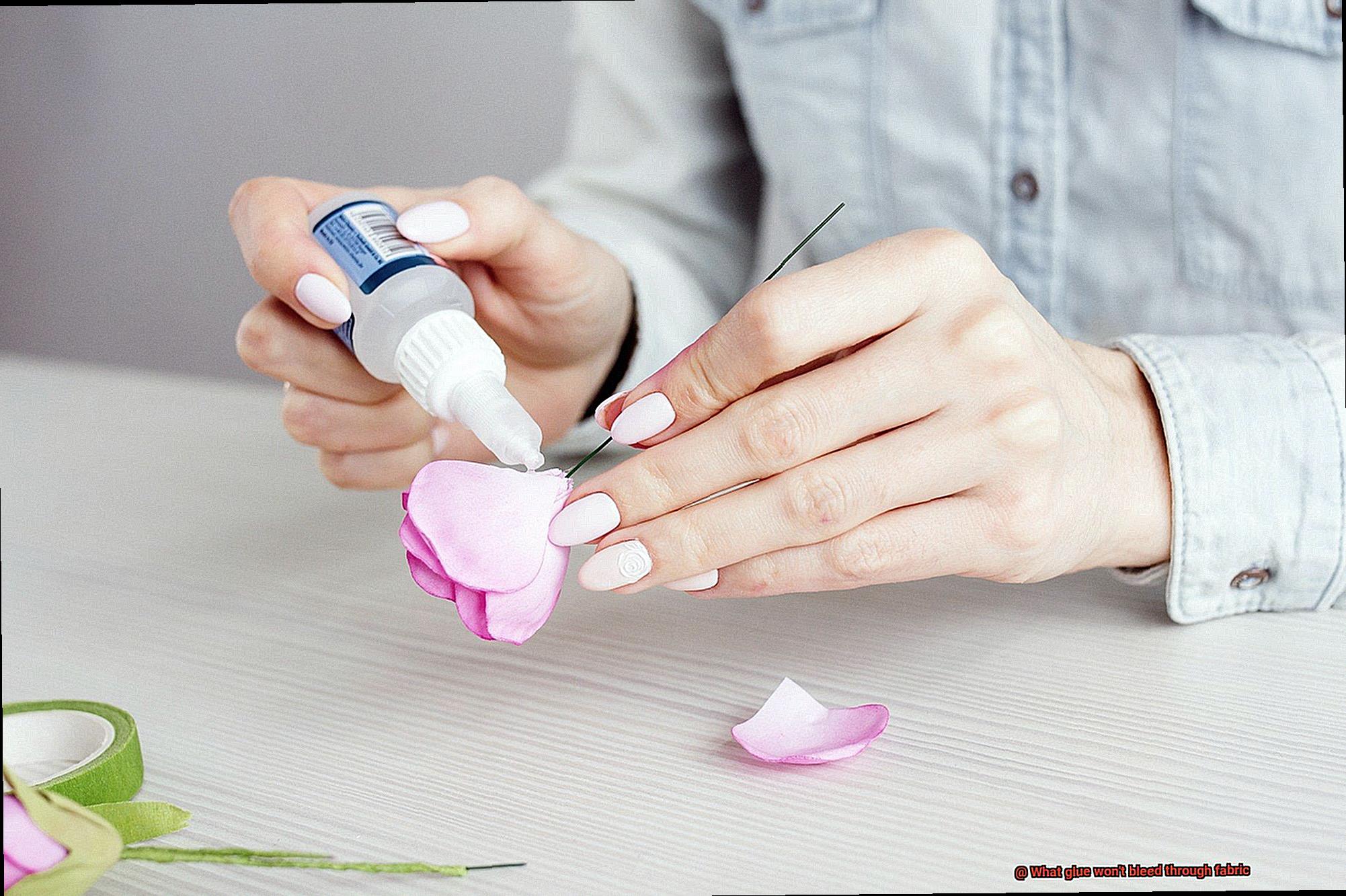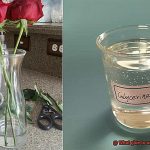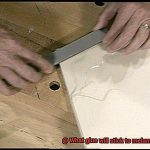Ever been excited about a craft project, only to be disappointed when the glue seeped through the fabric, leaving an ugly mess? We’ve all been there, frustrated and in search of a solution. But fret not. This blog post is here to be your trusty guide, helping you find the perfect glue that won’t bleed through fabric. Say goodbye to those unsightly marks and hello to flawless creations every time.
What glue won’t bleed through fabric?
Contents
- 1 What glue won’t bleed through fabric?
- 2 Understanding the Properties of Glue and Fabric Compatibility
- 3 Fabric Glue: An Ideal Option for Bonding Fabric
- 4 Adhesive Tape Designed for Fabrics
- 5 Super Glue: A Suitable Option for Bonding Fabric
- 6 Considerations When Using Glue on Fabric
- 7 Test on a Small Area Before Applying to Entire Surface
- 8 The Benefits of Using the Right Adhesive and Techniques
- 9 Conclusion
Casual Advice:
For casual DIY projects, a multipurpose fabric glue can be your new BFF. Look for one that proudly claims to be “non-bleeding” or “fabric-friendly” on the label. These glues are specially made to bond fabric without any spreading or seeping through. Before diving into your project headfirst, make sure to read the instructions carefully and do a small test on a scrap piece of fabric. This way, you can ensure that the glue plays nice with your material. Applying a thin and even layer and giving it ample time to dry will further reduce the chances of bleeding.
Professional Advice:
If you’re tackling more professional or heavy-duty projects, consider using fabric adhesives like fabric spray adhesives or hot glue guns. Fabric spray adhesives are formulated specifically for strong bonds without any bleeding through the fabric. Always follow the manufacturer’s instructions for proper usage and application. Hot glue guns can also do the trick if handled with care and expertise. Just remember to keep an eye on the temperature control because excessive heat can harm certain fabrics. Test on a small hidden area before proceeding.
In both cases, here are some general tips to help minimize the risk of glue bleeding through fabric:
- Pre-wash your fabric: Give your fabric a good wash before applying any glue. This helps remove any sizing or coatings that might interfere with the adhesive’s effectiveness.
- Apply glue sparingly: Less is often more when it comes to gluing fabric. Use thin and even layers for the best results.
- Use a barrier: Delicate or sheer fabrics? No problem. Place a barrier like wax paper or a pressing cloth between the fabric layers to prevent any potential bleeding.
- Let it dry thoroughly: Patience is key. Allow the glue to dry completely before handling or moving your project. This not only ensures a stronger bond but also reduces the chances of bleeding.
Understanding the Properties of Glue and Fabric Compatibility
Choosing the right glue for bonding fabrics is essential to achieve successful results. The properties of both the glue and the fabric play a crucial role in determining compatibility. In this article, we will explore the factors that influence fabric and glue compatibility, provide tips on selecting the right glue, and discuss proper application techniques.
Factors that Influence Fabric and Glue Compatibility:
- Viscosity: The thickness or stickiness of the glue, known as viscosity, is a critical factor. Thin, watery glues are more likely to bleed through fabric, while thicker or gel-like glues tend to stay in place without seeping through.
- Drying Time: The drying time of the glue also affects compatibility. Glues that take a long time to dry have a higher chance of seeping through before fully setting.
- Composition: The composition of the glue is important. Some glues contain solvents or chemicals that can react with certain fabrics, leading to bleeding or discoloration. Opt for glues specifically designed for fabrics as they minimize these risks.
Choosing the Right Glue for Fabric Bonding:
- Fabric Glue: Look for fabric glues labeled as “fabric glue” or “textile adhesive.” They have a thick, gel-like consistency and dry clear and flexible, making them ideal for bonding various fabric materials without bleeding or causing damage.
- Fabric Tape: Fabric tape is an excellent option for quick fixes or temporary solutions. It has adhesive on one side and a fabric backing on the other, allowing for easy application and repositioning without residue or bleeding through.
- Super Glue: Certain types of super glue or cyanoacrylate adhesive can be suitable for bonding fabric. Ensure that the super glue is labeled as fabric-safe and suitable for your specific fabric type, as it creates a strong bond that may be difficult to undo or adjust once dried.
Tips for Successful Fabric Bonding:
- Conduct a Test: Always test the glue on a small, inconspicuous area of the fabric before applying it to the entire surface. This determines compatibility and potential bleeding.
- Proper Application: Apply a thin, even layer of glue and avoid excessive pressure when bonding fabrics. This prevents seepage and ensures a strong and durable bond.
Fabric Glue: An Ideal Option for Bonding Fabric
Fabric glue is an ideal option for bonding fabric due to its many advantages and versatility. Unlike some adhesives that can leave visible marks or stains on the fabric, fabric glue is formulated to stay put without bleeding through the fibers. This ensures a clean and professional finish every time.
One of the key benefits of fabric glue is its ability to create a strong bond between fabric pieces while preserving the integrity of the material. Its water-based formula makes it easy to apply and clean up, and it dries clear and flexible, allowing the fabric to retain its natural texture and appearance.
Fabric glue is suitable for a wide range of fabric types, including lightweight and heavyweight fabrics. Whether you’re hemming a pair of pants, repairing a torn seam, or adding embellishments like sequins, beads, or appliques, fabric glue provides a secure hold without the need for stitching or sewing.
Using fabric glue is also a convenient alternative to traditional sewing methods. It allows for quick repairs or alterations without the hassle of needle and thread. Whether you’re a beginner or an experienced sewer, fabric glue is a valuable tool to have in your crafting arsenal.
However, it’s important to note that fabric glue may not be suitable for all fabric types or applications. Delicate fabrics or fabrics with special finishes may not adhere well with fabric glue. It’s always recommended to test the glue on a small, inconspicuous area of the fabric before applying it to the entire project.
Adhesive Tape Designed for Fabrics
Look no further. Introducing adhesive tape designed specifically for fabrics. In this blog post, we’ll explore the various types of fabric adhesive tape and how to use them effectively. So, grab your capes and let’s dive in.
Fabric Adhesive Tape:
Fabric adhesive tape is the superhero sidekick of the sewing world. Made from a combination of fabric and adhesive material, this remarkable tape bonds strongly to fabric surfaces without leaving behind any residue or causing discoloration. Available in different widths, it can be easily cut to the desired length. Use it for hemming garments, repairing tears or rips, or creating temporary fabric closures.
Double-Sided Fabric Tape:
For quick and easy fabric bonding without sewing or stitching, double-sided fabric tape is your go-to option. With adhesive on both sides, this tape effortlessly attaches appliques or trims to fabric and holds fabric pieces in place during fittings or alterations. It’s a must-have for crafting projects and fashion design.
Medical Tapes:
Surprisingly, medical tapes can also come to your rescue when working with fabrics. Surgical tape or hypoallergenic tape often feature gentle adhesives that are safe to use on skin and won’t bleed through fabrics. Not only are they great for dressings and bandages, but they also work well for temporary fabric repairs or alterations.
Tips for Successful Bonding:
- Ensure the fabric surface is clean and free from dirt or oils before applying the tape.
- Cut the tape to the desired length and apply it evenly onto the fabric.
- Press the tape down firmly to create a strong bond without any bleeding through.
- Test the tape on a small area first when working with delicate or special-finish fabrics.
Super Glue: A Suitable Option for Bonding Fabric
When it comes to bonding fabric, super glue emerges as the superhero in the adhesive world. With its strong and quick-drying properties, it becomes an effective option for various fabric applications, making it the go-to choice for DIY enthusiasts and crafters alike.
One of the key advantages of using super glue on fabric is its ability to form a strong bond within seconds of application. Gone are the days of waiting hours or even days for your project to be complete. If you accidentally tear your favorite pair of jeans, a little dab of super glue can swiftly mend the fabric, getting you back in action in no time.
Moreover, super glue offers versatility with its availability in different forms such as liquid, gel, and brush-on applicators. The liquid form, especially, proves ideal for bonding fabric as it effortlessly seeps into the fibers, creating a robust bond. This flexibility allows you to choose the best option based on your specific project needs, ensuring maximum convenience and effectiveness.
However, there are a few considerations when using super glue on fabric. Firstly, it’s crucial to ensure that the fabric surface is clean and free from any dirt, dust, or oils before applying the glue. By gently washing the fabric or wiping it with a clean cloth dampened with rubbing alcohol, you can ensure optimal adhesion.
Additionally, excessive application of super glue can leave an unsightly white residue on the fabric. To avoid this, it is recommended to use the glue sparingly and avoid applying it directly onto visible areas of the fabric. Instead, apply a small amount of glue to one surface first and then firmly press the two surfaces together.
Super glue works well on various types of fabric such as cotton, polyester, nylon, and silk. However, it may not be suitable for highly sensitive or delicate fabrics like lace or chiffon. In such cases, it is advisable to test the glue on a small, inconspicuous area before proceeding with the actual application. This precaution ensures that the glue does not cause any damage or discoloration to the fabric.
It’s important to note that while super glue provides a strong bond, it may not be suitable for applications where flexibility is required. If you need to bond two pieces of fabric that need to stretch or move with ease, a flexible adhesive like fabric glue may be a better option. This consideration ensures that your project retains its functionality and durability.
Considerations When Using Glue on Fabric
When using glue on fabric, there are several important considerations to keep in mind to ensure a successful and clean application. By considering these factors, you can minimize the risk of bleeding and achieve the desired results.
- Type of fabric: Different fabrics have different properties, and some may be more prone to showing glue marks or experiencing bleeding than others. Delicate and lightweight fabrics like silk or chiffon are particularly vulnerable, while thicker and more tightly woven fabrics like denim or canvas are generally more forgiving when it comes to glue application.
- Type of glue: Choosing the right type of glue is crucial in preventing bleeding. Look for glues that are specifically designed for fabric and labeled as fabric-friendly or fabric adhesive. These glues have properties that prevent bleeding and ensure a strong bond without damaging the fabric.
- Application method: How you apply the glue can also affect the likelihood of bleeding. It’s best to apply the glue sparingly and in small amounts, especially when working with delicate fabrics. This will minimize the risk of excess glue spreading and causing bleeding. Additionally, be mindful of spreading the glue too close to the edges of the fabric, as this can increase the chances of bleeding.
- Test run: Before committing to gluing your entire fabric project, it’s advisable to do a test run on a small and inconspicuous area. This will allow you to observe how the glue interacts with the fabric and whether it causes any bleeding or staining. If any issues arise during testing, consider using a different type of glue or adjusting your application method.
- Drying time: Proper drying time is crucial in preventing bleeding. Rushing the drying process by applying heat or pressure can cause the adhesive to spread and seep into the fabric, leading to bleeding. Follow the manufacturer’s instructions regarding the recommended drying time for the specific glue you’re using to ensure optimal results.
- Fabric preparation: Before applying glue, it’s important to properly prepare the fabric. Remove any wrinkles or creases and ensure that the fabric is clean and free of dirt or debris. This will create a smooth surface for the glue application. Additionally, make sure the fabric is completely dry before applying glue, as moisture can affect the adhesive properties and increase the likelihood of bleeding.
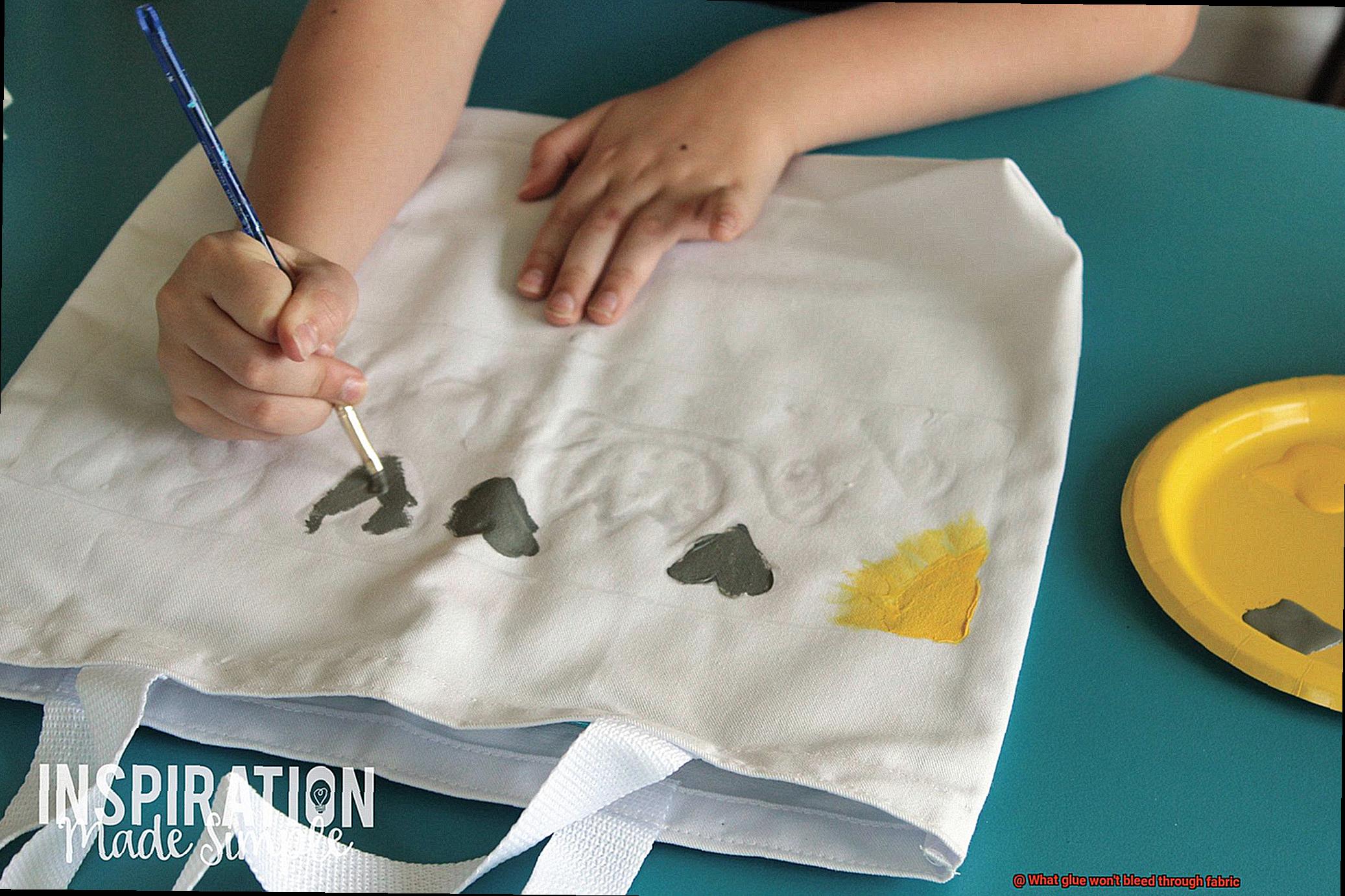
Test on a Small Area Before Applying to Entire Surface
As crafters, we all know the joy that comes from creating something beautiful out of fabric. Whether it’s a stunning quilt, a whimsical stuffed animal, or a fashionable garment, the possibilities are endless. But before we dive into our project headfirst, there’s one crucial step that often gets overlooked – testing the glue on a small area of fabric. Trust me when I say this small test can save you from a world of frustration and disappointment. So, let’s explore why this step is so important and the potential risks you might encounter if you skip it.
Why Testing on a Small Area is Beneficial:
Different fabrics have different characteristics, and not all glues are created equal. By testing on a small, inconspicuous area, we can gauge how the glue will behave without jeopardizing our entire project. This simple test allows us to identify any potential issues such as bleeding, discoloration, stiffness, or poor adhesion before committing to gluing the entire surface.
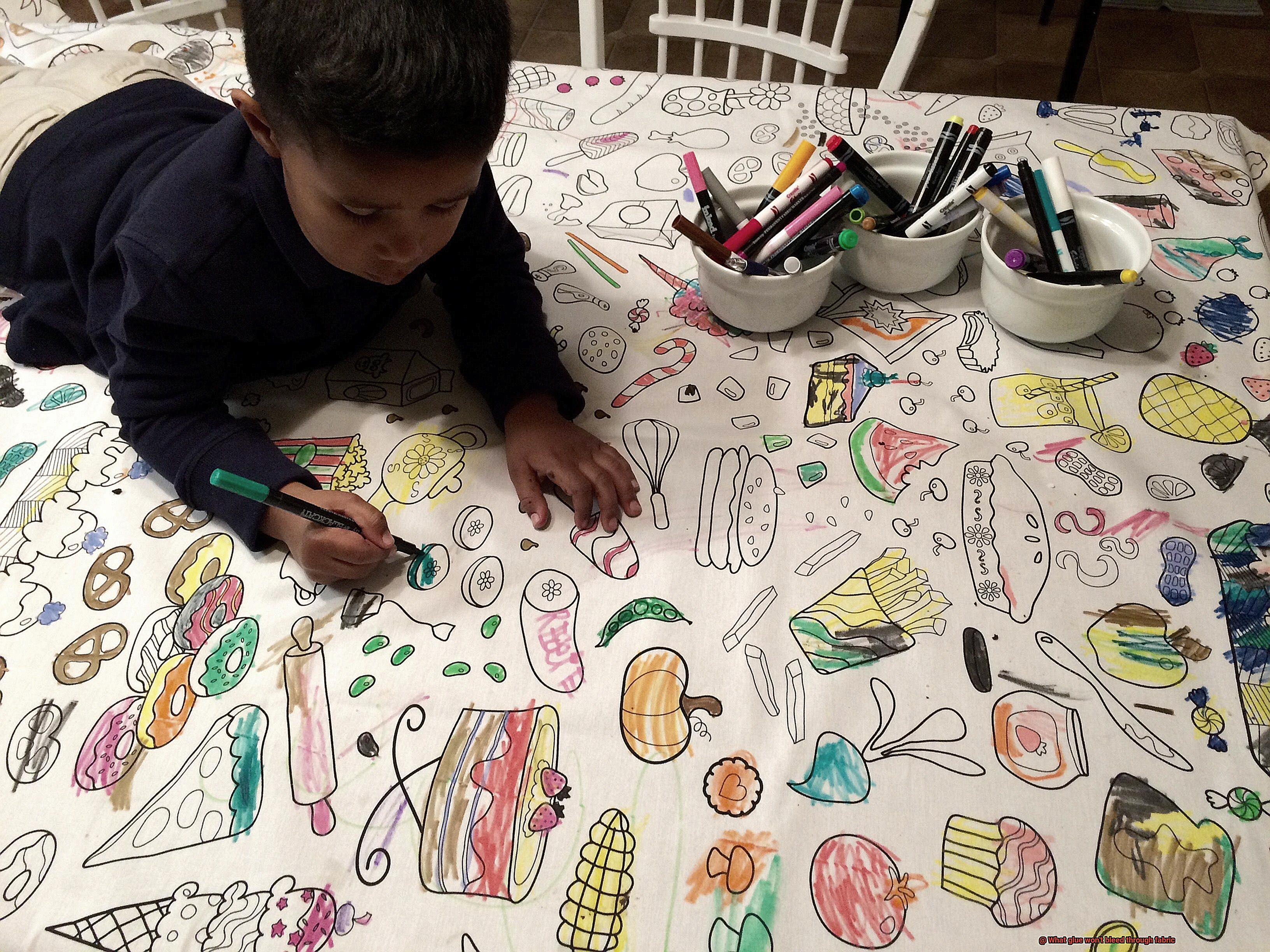
Potential Risks of Skipping the Test:
Imagine spending hours meticulously piecing together your fabric masterpiece only to have it ruined by an ill-suited glue. Without testing, you run the risk of the glue bleeding through your fabric, leaving unsightly stains that are nearly impossible to remove. You might also encounter discoloration or changes in texture that can completely mar your hard work. Don’t let all your efforts go down the drain – take a few minutes to test on a small area and save yourself from heartache later.
What You Can Learn from Testing:
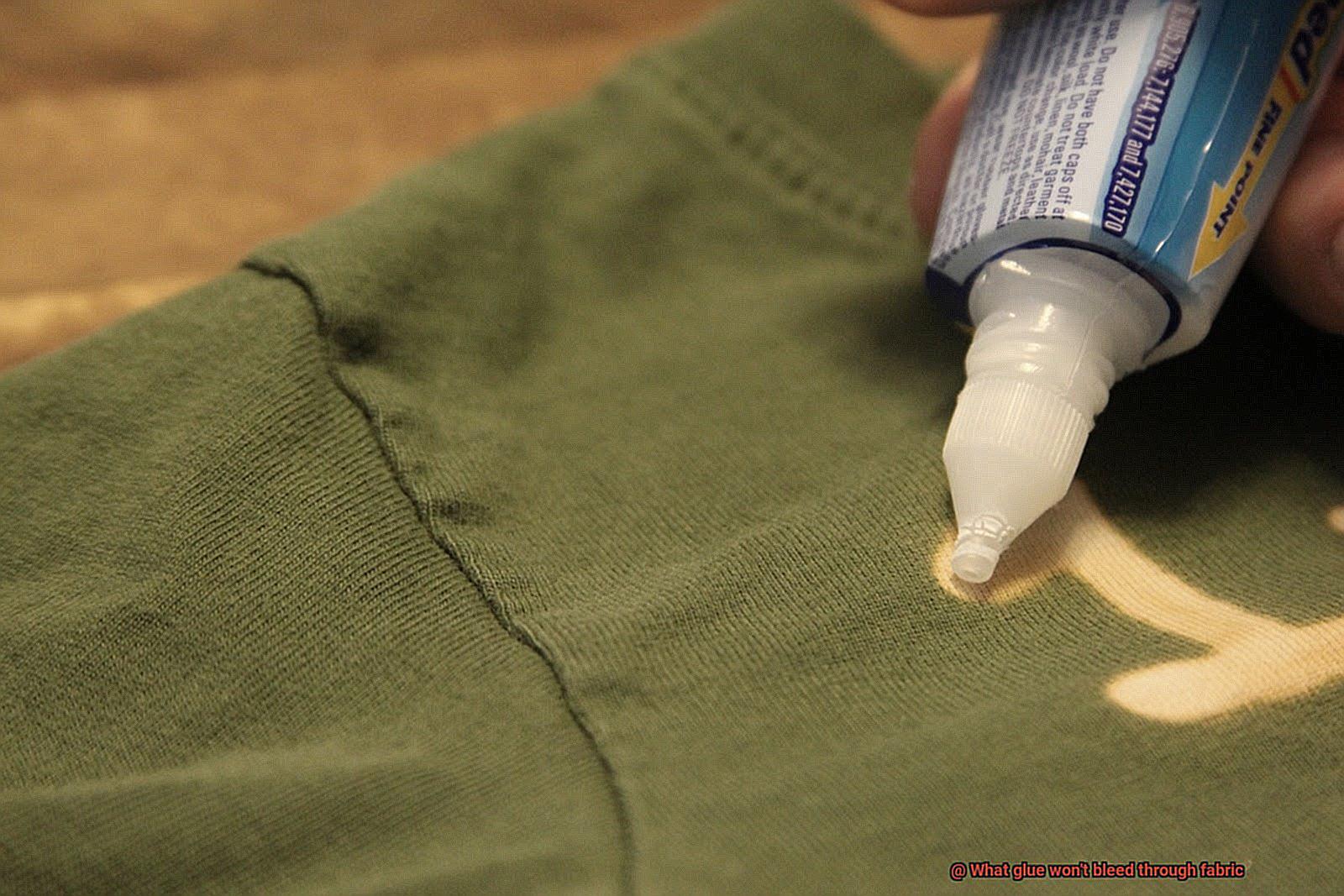
Testing on a small area provides valuable insights into the compatibility between your chosen glue and fabric. It allows you to evaluate how well the glue adheres and whether it withstands stress or peels off easily. Additionally, you can assess how the glue affects the fabric’s appearance and texture. By conducting this small test, you can troubleshoot any potential problems and make an informed decision about the suitability of the glue for your project.
Steps for Testing on a Small Area:
- Research: Before starting, thoroughly research the glue you plan to use. Understand its intended application, drying time, and any specific instructions provided by the manufacturer.
- Gather Materials: Ensure you have all the necessary tools and materials for the test, including a small piece of fabric similar to your project fabric, the chosen glue, and any additional items required for application or drying.
- Choose an Inconspicuous Area: Select a small, inconspicuous area of the fabric to perform the test. This could be a corner or the backside of the fabric.
- Apply the Glue: Follow the manufacturer’s instructions to apply a small amount of glue to the chosen area. Use a brush or applicator suitable for the type of glue being used.
The Benefits of Using the Right Adhesive and Techniques
In this article, we will explore the advantages of using the right adhesive and techniques, from preventing unsightly bleeding to saving valuable time and money.
Prevents Unsightly Bleeding:
Working with delicate or light-colored fabrics can be nerve-wracking, as the last thing you want is for the color from your adhesive to seep through and ruin your project’s appearance. By using an adhesive specifically designed for fabric, you can avoid this mishap and ensure a clean and impeccable finish.
Provides Exceptional Bonding:
The right adhesive and techniques create a strong and durable bond between fabric layers, especially important for sewing or patching projects that need to withstand daily wear and tear. Opting for an adhesive renowned for its superior bonding properties guarantees that your finished product will maintain its integrity over time.
Saves Precious Time and Effort:
Using the appropriate adhesive not only ensures a successful outcome but also saves you valuable time and effort. A quick-drying adhesive allows you to swiftly progress through your project, while an easy application process enhances your efficiency. With the right techniques, you can achieve professional results in less time, leaving you more room for creativity.
Saves Money in the Long Run:
Investing in a high-quality adhesive may seem like a larger upfront cost, but it can actually save you money in the long run. By avoiding bleeding or unsuccessful bonding, you eliminate the need to purchase additional materials or spend precious time fixing mistakes. Choosing the right adhesive from the start ensures that you achieve your desired results without costly rework.
__xuBCKbc4s” >
Conclusion
When it comes to finding a glue that won’t bleed through fabric, you want a solution that sticks without staining.
We’ve got the answer you’ve been searching for.
Say goodbye to those frustrating moments when your glue seeps through and ruins your carefully crafted project. With our expert recommendation, you can ensure that your fabric remains pristine and untouched by any unsightly marks.
Trust us, we’ve done the research so you don’t have to.

